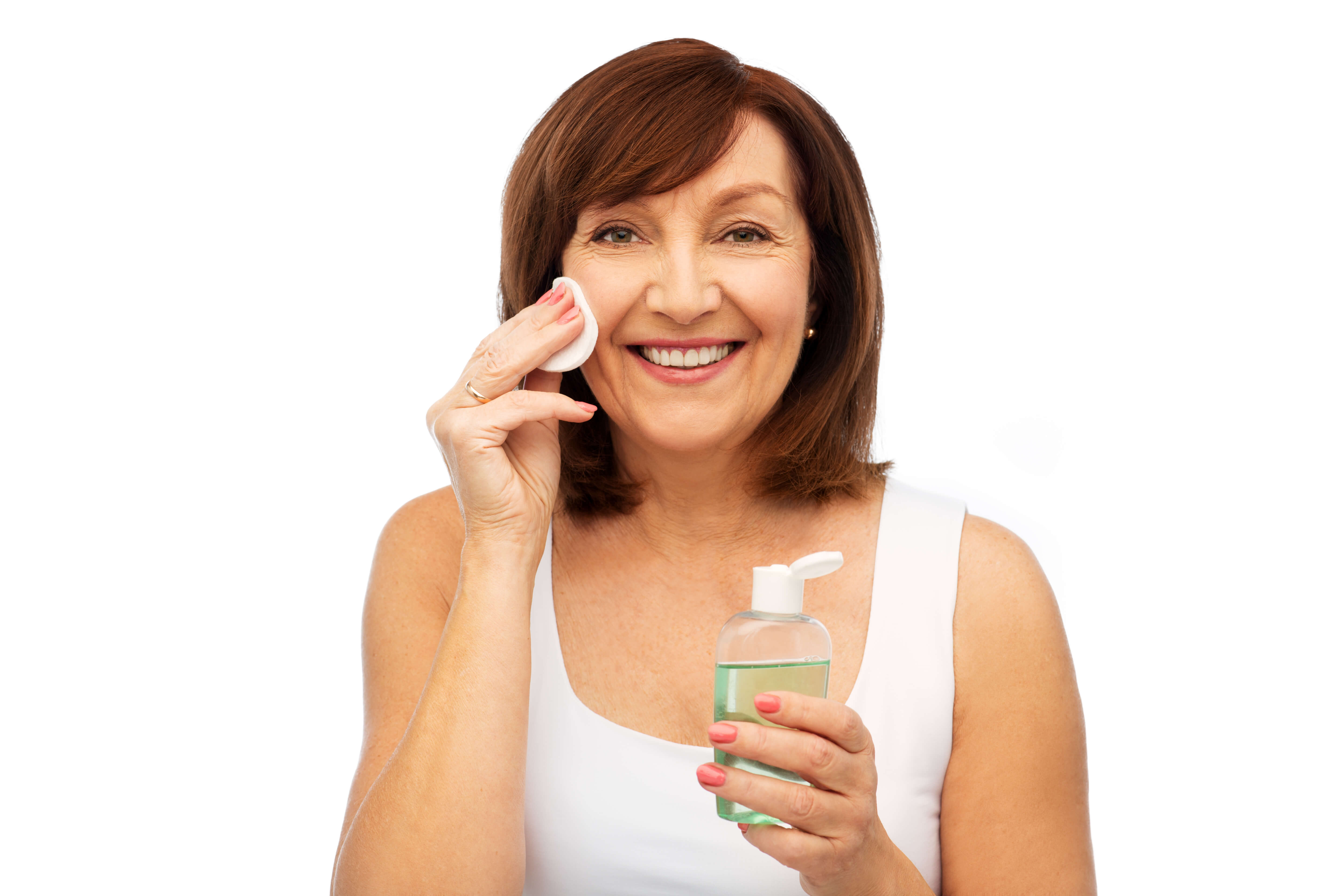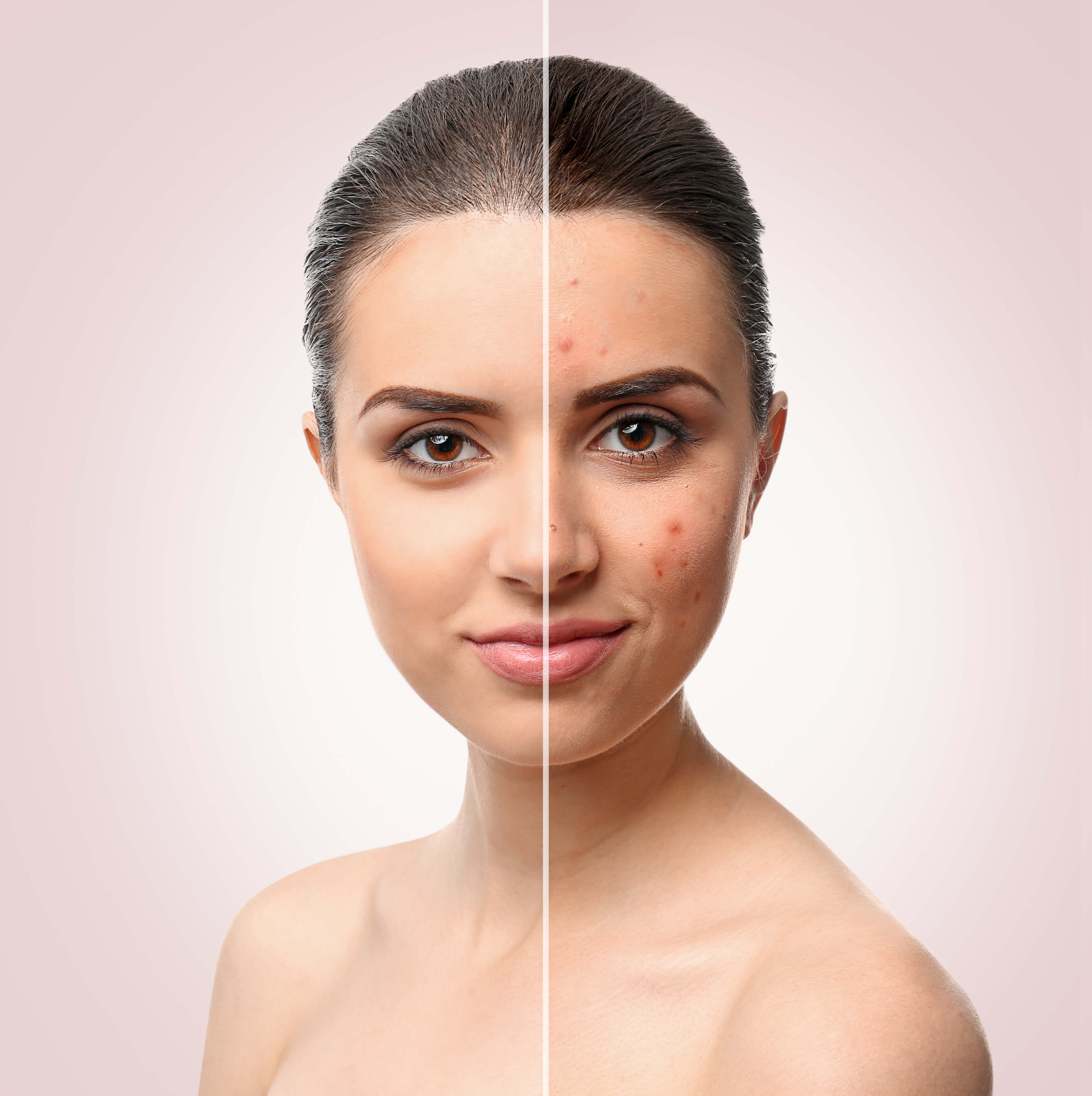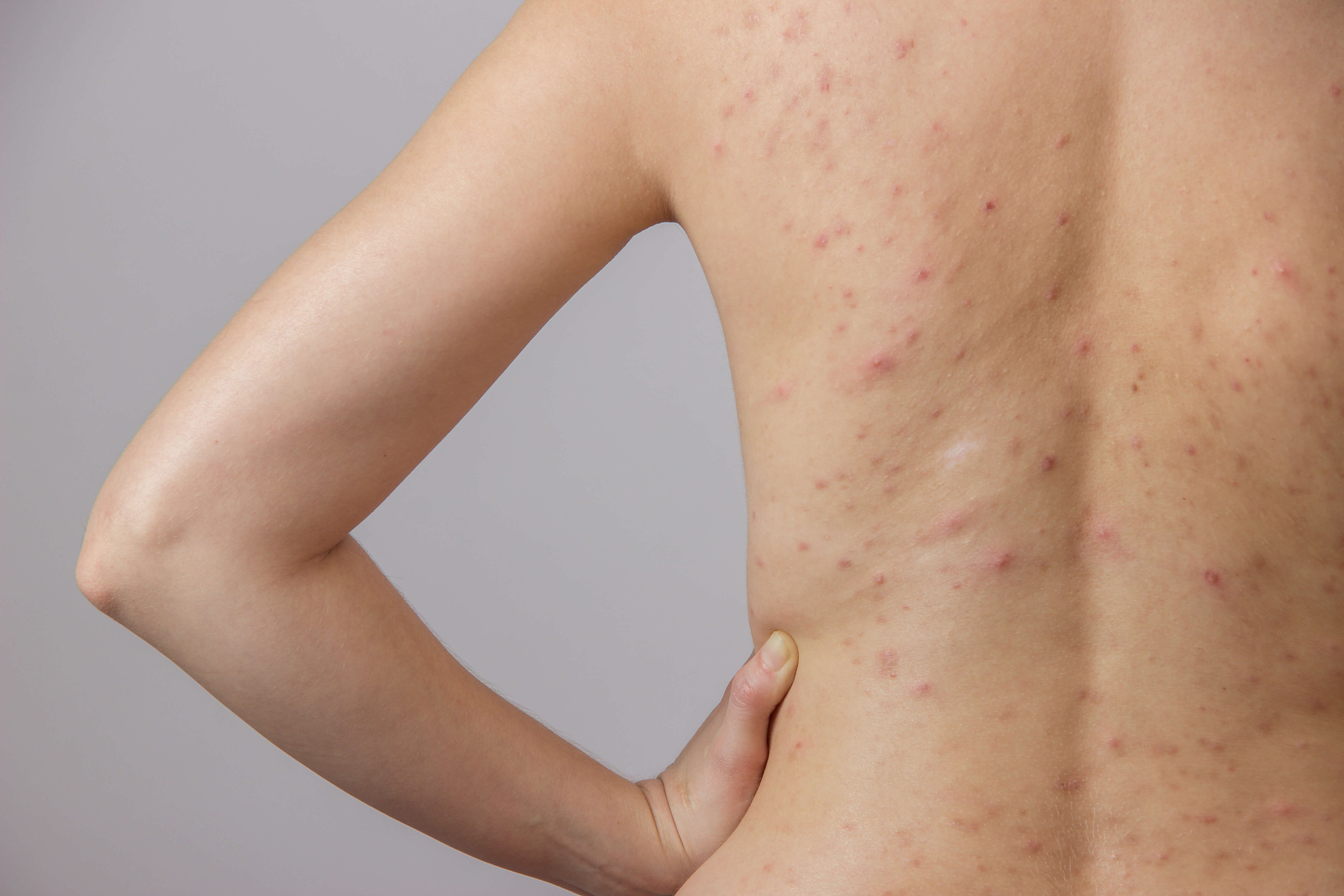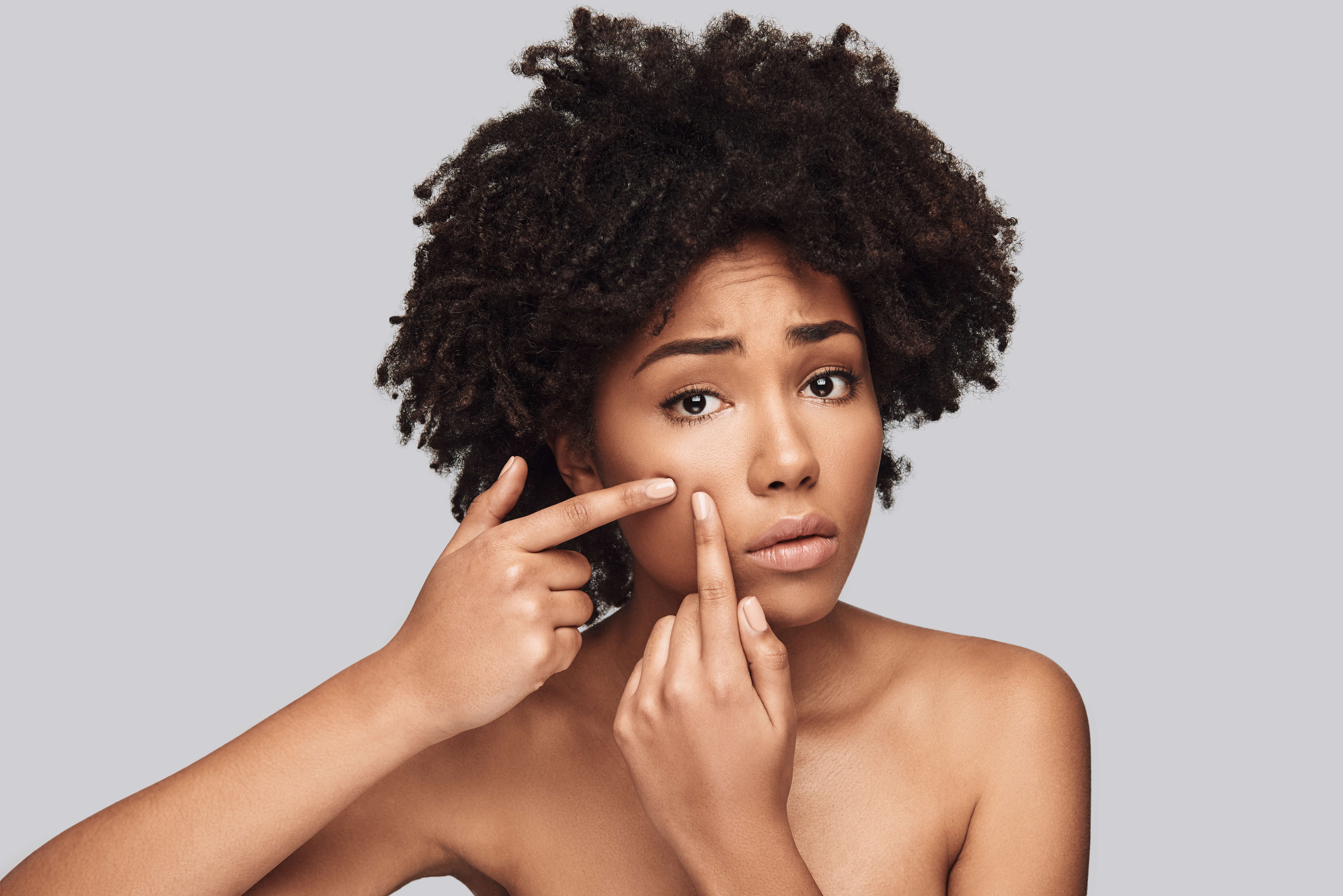Not all acne is created equal. Each type of acne has its own unique properties, causes and solutions. According to the American Academy of Dermatology, acne affects 50 million Americans annually. Not only does acne effect you physically; but, the emotional and societal symptoms can be just as painful. Considering that acne can be acute or chronic depending on factors such as
- Age
- Gender
- Skin type
- Environmental habits
Understanding the 5 major types of acne can help you develop more effective skincare routines to improve the health of your skin.
The Types of Acne To Identify
Whiteheads
This type is probably the people are most familiar with, it's the one that we're all tempted to pop. A whitehead is a form of acne that develops when dead skin cells, excess sebum (oil) and bacteria become trapped under skin. This causes the bump to become filled with pus and closed at the surface. When the pus reaches a considerable amount, it becomes inflamed
Causes
- Hormonal changes during puberty, pregnancy and menopause
- Stress
- Birth control medications (starting or stopping)
- Makeup with oil derived ingredients
- Oily skin type
- Fatty diet
Level: Mild
Blackheads
Often times blackheads are hardly noticeable and don't cause inflammation. Much like whiteheads, they are a clogged hair follicle caused by excess oil and dead skin accumulation. The only real difference is that blackheads are “exposed” which then leads oxidation. This chemical reaction causes the pigment causing polymer, melanin to cause the area to darken.
Causes
- Lack of/ poor exfoliating habits
- Intensive face creams
- Makeup with artificial fragrances
- Medications that increase testosterone levels
- Poor diet
Level: Mild

Papules
Now this form of acne is not considered mild like blackheads or whiteheads. This form of acne is solid red raised bump sans pus. This type raises above the skin and often has tenderness surrounding the inflammation. Essentially the pore becomes so inflamed that the walls of cells break and cause a small cluster of pimples. This often can be mistaken for a rash due to their rough texture.
Causes
- Genetics
- Restrictive clothing
- Not bathing after rigorous activity
- Hormone imbalance (Puberty)
Level: Mild

Pustules
This type of acne is similar to its counterpart, papules in regards to size, inflammation and surface texture. The one feature that separates them from one another is that pustules are filled with fluid and dead cells that have yet to be removed .They often have a bluster like appearance and are extremely sensitive due to the infection causing bacteria beneath the surface. The center will often have a white or red center and will be painful to the touch.
Also known as pus, this fluid is composed of a yellowish compound and is sometimes mixed with blood. This pus is caused by infection buildup within the pore cavity. In attempt to fight the infection, your body uses white blood cells to help clear out the pore.
Causes
- Hormonal (Puberty)
- Excess oil and dirt
- Genetics
Level: Moderately severe

Cysts
This form of acne is considered the most extreme case of acne and often difficult to treat with solely over the counter medication. Cysts occur when pustules cluster together and form at the deepest skin layer. This type of acne often leads to a “crater” like appearance that burrows on skin and causes scarring. It does not come to a head like whiteheads/blackheads. Attempting to pop this type of acne leads to the spread of infection and breaking the dermal layers; causing, them to scab.
This type of acne is more than likely to be chronic and one bump can even stay for months at a time. This then leads to the fact that this type of acne cannot be treated with face wash alone. It is often the case that one will need the aid of prescription medications such as; isotretinoin, benzoyl peroxide, retinoids and accutane,
Level: Severe
Causes
- Dairy heavy diet ( try to avoid cheese especially)
- Men are more prone due to higher testosterone levels
- Applying heavy moisturizers to dirty skin
- Hormone imbalance


 Cetaphil Cleanser
Cetaphil Cleanser  Everything you Need to Know About Facial Extractions
Everything you Need to Know About Facial Extractions  DIY Face Toners
DIY Face Toners  The Best Acne Scar Treatments
The Best Acne Scar Treatments  Top Products To Use For Body Acne
Top Products To Use For Body Acne  Causes of Adult Acne
Causes of Adult Acne